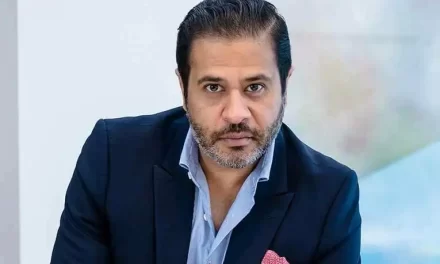Todd Caccamo is the Vice President and General Manager of Sales at Materion Corporation, where he oversees a $300 million commercial and compliance team for advanced material solutions used across various industries such as consumer electronics, defense, automotive, and aerospace. A visionary leader, Caccamo has implemented cutting-edge digital tools at Materion, leading to significant cost savings and revenue growth. His strategic initiatives have propelled the company to achieve record-breaking new business revenues, even during challenging periods like the COVID-19 pandemic.
Todd Caccamo holds a Bachelor of Science in Mechanical Engineering from the University of Michigan and a Master of Business Administration from Wayne State University. Over his illustrious career spanning over two decades, he has held key leadership positions in prominent companies, driving growth, innovation, and operational excellence. Before joining Materion, Caccamo held senior executive roles at Rhinestahl Corporation and General Electric (GE), where he refined commercial efforts, drove sales growth, and fostered strategic partnerships. His achievements include securing significant wins with premier clients, exceeding sales targets, and implementing innovative sales and marketing methodologies. Besides his professional accomplishments, Todd Caccamo is a dedicated community servant and military veteran.
As a decorated combat veteran of the United States Marine Corps, he was a Platoon Sergeant and Training NCO, demonstrating exemplary leadership and courage in various wartime, peacetime, and humanitarian missions. His commitment to service extends to his involvement with organizations like The Humane Society of Clark County and the Charter Township of Canton, where he has served as treasurer, board member, and township trustee. Additionally, Caccamo is passionate about hockey. Actively involved in playing and coaching since 1980, he mentors aspiring players at all levels as a USA Hockey-certified coach. He is committed to instilling self-discipline, confidence, and strong fundamentals in his players, both on and off the ice. Todd Caccamo’s career reflects his unwavering commitment to excellence, integrity, and service, profoundly impacting every endeavor he undertakes.
Can you describe a significant cost-saving initiative you have led that balanced maintaining or improving quality with reducing expenses?
I have led many initiatives throughout my career, but the most memorable one was at Materion Corporation. I led a transformative cost-saving and organizational integration initiative to optimize our customer service and commercial processes. By implementing Lean methodologies and fostering more vital collaboration with internal and external stakeholders, we significantly reduced overhead costs while deepening the level of customer intimacy. Key to this success was a thorough assessment of our existing practices and engaging our team in identifying inefficiencies. This initiative involved cutting costs and improving operational efficiency, which contributed to our ability to achieve record-breaking new business revenues. The project emphasized balancing cost management with customer engagement to drive sustainable growth.
How do you balance the need for cost efficiency with the drive for innovation in a competitive market?
Balancing cost efficiency with innovation requires a strategic approach that fosters a culture of continuous improvement and encourages cross-departmental collaboration. At GE, for instance, we integrated Lean principles into our commercial processes, which streamlined product development and reduced costs without compromising innovation. We focused on understanding market needs and aligning our product development efforts accordingly. One successful strategy was developing value-pricing models based on comprehensive market analysis, ensuring our offerings resonated with customers. By maintaining a focus on both cost management and innovative solutions, we were able to stay competitive and drive significant growth.
What key steps are needed to identify and implement cost reductions while ensuring operational efficiency and effectiveness?
There are too many to list here, but the key is to take a structured approach. For example, at B&P , we utilized Six Sigma methodologies to streamline operations, which resulted in a 20% reduction in production time and a 15% cost reduction. By fostering a culture of teamwork and accountability, we achieved significant cost savings while enhancing operational efficiency and effectiveness, ultimately boosting our competitive edge.
How has your educational background influenced your approach to strategic cost management in your leadership roles?
My educational background, mainly my mechanical engineering degree, has profoundly influenced my approach to strategic cost management. The technical foundation from my engineering degree allows me to understand complex operational systems, while my MBA equips me with strategic business acumen. This combination enables me to bridge the gap between engineering and executive leadership. At GE, for example, my ability to understand technical and business aspects facilitated the development of innovative solutions that improved efficiency and reduced costs, driving business growth and operational excellence.
Which methodologies have you found most effective in streamlining operations and cutting costs across different organizations?
There are many, but some of the most effective are value stream mapping, root cause analysis, and continuous improvement (Kaizen) events. Value stream mapping helps identify waste and streamline processes, while root cause analysis addresses underlying issues impacting efficiency. Kaizen events engage employees in ongoing improvement efforts, fostering a culture of teamwork and accountability. At B&P, these Lean and Six Sigma tools helped reduce production time by 20% and cut costs by 15%, significantly enhancing our operational efficiency and market competitiveness. These methodologies consistently deliver substantial cost savings and process improvements across various organizations.
Can you explain how market analysis helped you identify cost-saving opportunities leading to revenue growth?
I conducted a comprehensive market analysis for a new engine service product at GE, identifying key market trends and customer pain points. This analysis revealed opportunities to streamline our offerings and develop a value-pricing strategy that resonated with our target audience. By aligning our product development with market needs, we achieved significant cost savings and drove substantial revenue growth. This strategic alignment resulted in increased market share and enhanced our competitive position. The project demonstrated the power of leveraging market analysis to identify cost-saving opportunities that drive revenue and business expansion.
What strategies do you employ to ensure new product developments are cost-effective and highly competitive?
Ensuring that new product developments are cost-effective and competitive involves several vital strategies. First, comprehensive market analysis informs our pricing and development strategies, ensuring our products meet market demands. Integrating Lean principles into product development helps streamline operations and reduce costs without compromising quality. Additionally, fostering cross-functional collaboration ensures that all product aspects align with market needs and business objectives. At GE Aviation, for example, these strategies helped us develop a new engine service product that was both cost-effective and highly competitive, driving significant revenue growth and market share.
How do you adapt your cost-saving strategies to meet the unique challenges of the different industries you have worked in?
It takes a deep understanding of each sector’s unique challenges and opportunities. Flexibility and continuous learning have been critical to driving cost efficiency and achieving objectives across diverse environments. My ability to quickly understand and address industry-specific challenges has been instrumental in implementing effective cost-saving measures.
How did your experience in public service influence your cost management strategies in the corporate sector?
My experience in public service, particularly as a township trustee, where I reduced government spending by 15%, profoundly influenced my cost management strategies in the corporate sector. This role taught me the importance of public accountability, fiscal discipline, and rigorous budget analysis. Prioritizing essential expenditures and eliminating waste became key strategies I carried into the corporate world. These principles of responsible spending and effective resource allocation helped me achieve significant cost savings in various leadership roles. The discipline and strategic planning skills developed in public service have been invaluable in driving financial efficiency and operational excellence in the corporate sector.
Can you discuss a time when you faced resistance to cost-saving measures at a strategic level and how you overcame it to achieve your objectives?
I encountered resistance when restructuring the sales and marketing department at Materion when implementing cost-saving measures. To overcome this, I communicated the benefits of the proposed changes clearly and involved key stakeholders in the decision-making process. Demonstrating quick wins and fostering a continuous improvement culture helped gain the team’s buy-in. I built trust and support for the initiatives by showing tangible results and maintaining transparency. This inclusive approach led to a successful turnaround, with new business revenues growing from $17 million to over $100 million, highlighting the effectiveness of transparent leadership in driving organizational change and achieving strategic objectives.




